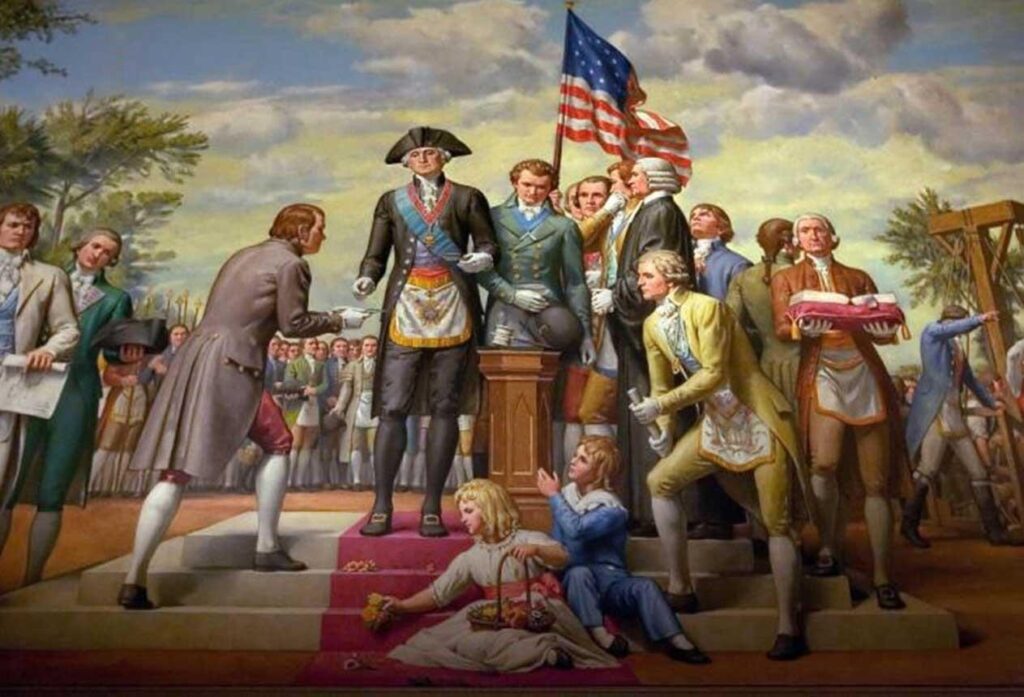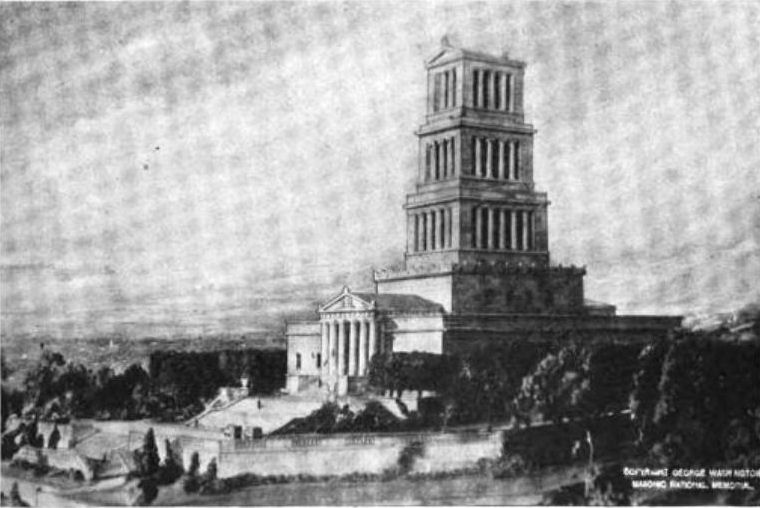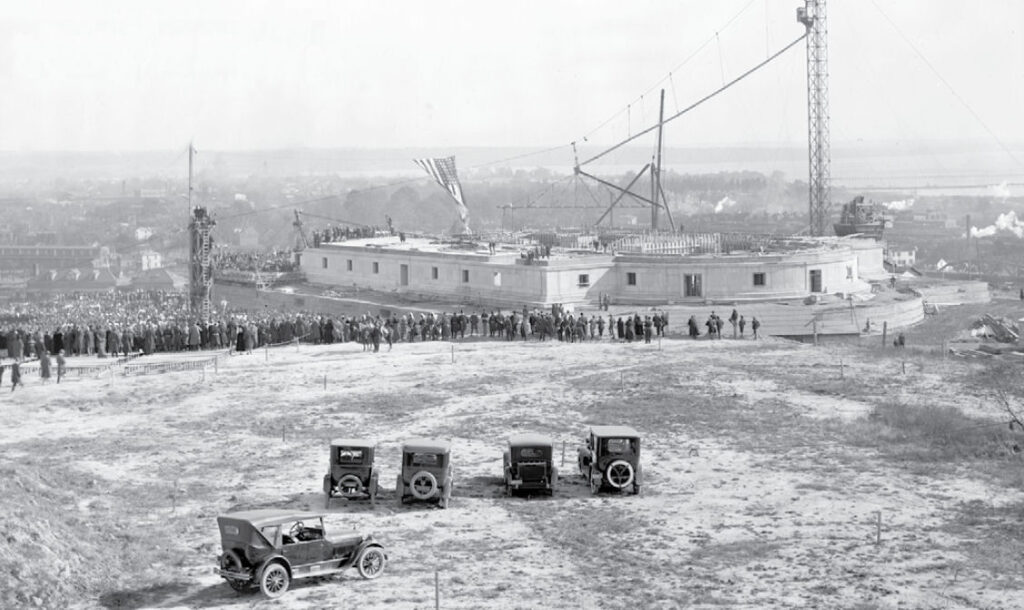Few men have inspired generations of Freemasons in the way that the United States’ founding fathers have. George Washington, in particular, stands out for his keen military intellect, natural political savviness, and his unparalleled credentials as a leader. He was instrumental in defeating the British during the American Revolution and played an indispensable role in adopting and ratifying our nation’s Constitution. As the first president, he implemented and oversaw a robust national government and advocated for broad religious freedom.

Washington was guided by the Masonic principles of brotherly love, relief, and truth throughout his illustrious career. His life was one of service, reflective of the lessons passed through centuries of men striving to contribute to something greater than themselves. Brother Washington’s accomplishments have long spoken to men in and out of the fraternity. His lasting influence remains set in stone at The George Washington Masonic National Memorial in Washington D.C. This project required the cooperation of Freemasons from all corners of the United States of America.
Worshipful Master Washington
George Washington’s Masonic journey began when he was a young man of 20. He was raised a Master Mason in 1752 in Fredericksburg, Virginia. He immediately became a regular attendee for meetings at the Lodge of Fredericksburg and took an active role in the community. He famously stated that Freemasonry was “founded on benevolence and to be exercised for the good of mankind.” As his military and political career progressed, Brother Washington maintained correspondence with his brethren and often accepted invitations to lodge events, attending celebrations and rituals throughout the states. During the Revolution, he supported men within the military in their efforts to create Masonic lodges. Washington even helped establish Alexandria Lodge No. 22 in Virginia in 1788 and was promptly made its first Master.
All told, George Washington was an active Freemason for 47 years and attended many fraternal ceremonies in that time. None as famous as the ceremonial placement of the cornerstone of the United States Capitol on September 18, 1793. During his presidential term, Washington laid the cornerstone of the capitol building in a Masonic ritual assisted by the Grand Master of Maryland, Joseph Clark, and three Worshipful Masters. Together, they delivered the customary corn, wine, and oil sacrifices before Washington struck the stone three times with a gavel. A more fitting scene is hard to imagine than the father of our nation laying the cornerstone of the building that to this day is the embodiment of the United States and the freedoms it promises.
Following his death, many of the president’s personal effects were donated to Alexandria Lodge No. 22. These artifacts became known as “Washingtonia,” and included items from his tenure as the lodge’s first Master.
The First Memorial
Given his many accomplishments in service to both Americans and the fraternity, it’s no surprise that the men of Fredericksburg Lodge No. 4 in Virginia conceived of erecting a posthumous Masonic memorial for George Washington. In 1852, the lodge sought funds from Grand Lodges to construct a memorial Masonic Temple with a large statue in the vestibule. The Grand Lodges obliged, and before long, the adequate funds were raised to commission a life-size bronze statue of the former president in Masonic regalia from the famous sculptor, Hiram Powers. The completed statue was erected in Alexandria in 1861, where it stood until 1863, when it was moved to Richmond in the throes of the Civil War. Sadly, the figure was consumed by fire as Richmond surrendered to the Army of the Potomac on April 3, 1865.
The Association
By 1907, Grand Masters and influential Masons throughout the United States were eager to create a new George Washington Memorial. A committee convened in Alexandria-Washington Lodge No. 22 that year to establish the George Washington Masonic National Memorial Association. In 1910, the Association set to construct a new memorial on Shooter’s Hill in eastern Alexandria, Virginia, enlisting famed skyscraper architect Harvey Wiley Corbett to design the memorial.

Corbett quickly concocted a model that reimagined Alexandria’s ancient Lighthouse in Egypt and featured both Neoclassical and modern skyscraper architectural elements. His final design received enthusiastic support from the memorial association, and the ground was officially broken on June 5, 1922. On November 1, 1923, President Calvin Coolidge laid the memorial’s cornerstone with the help of a trowel once used by George Washington. The ceremony saw 14,000 Masons, dignitaries, United States armed forces personnel, police, and others attend and march in a parade from the Alexandria waterfront to Shooter’s Hill.
Masons Set to Labor
Building the George Washington Masonic National Memorial proved to be a slow yet steady process. Such an impressive structure proved expensive, and the entire project required a fiscally responsible approach relying solely on donations from Masonic lodges. The building was slowly constructed over the next decade, it towers ten levels high and rising over 300 feet, with construction of the exterior concluding on February 8, 1931. The Grand Chapter of Virginia of Royal Arch Masonry donated the aluminum double-keystone symbol and light at the top of the building. At the time, it was the biggest fixture of its kind in the world.

In 1932, the memorials dedication ceremony was held, with an estimated 150,000 people in attendance, many of whom slept in train cars due to lack of hotel accommodations. Despite heavy rains on the day of the event, 15,000 people paraded through Alexandria to the memorial before the dedication ceremony, including 5,000 U.S. military personnel and 3,000 Knights Templar. Masons from all over the world representing every branch of U.S. Freemasonry attended, as well as President Hoover and nearly his entire Cabinet.
Astonishingly, the Washington Masonic Memorial was built without incurring debt as the Association was adamant about refusing to approve any funding for materials or services until the money for each effort was secured. With the exterior complete, construction on the interior of the building ensued. It would continue for nearly 40 years, with progress slowing significantly throughout the 1930s and 40s as funding and materials dwindled during the Great Depression and Second World War.
After the war, work on the building proceeded earnestly. With men returning to the states, Freemasons were eager to educate the public on the fraternity and the life of brother George Washington. Alexandria-Washington Lodge No. 22 opened a replica lodge room to display original Washington artifacts. In 1950, President Harry S. Truman, a Past Grand Master of Missouri, dedicated a massive 17-foot bronze statue of George Washington. Today, the figure stands at the building’s entrance, welcoming visitors as they enter the memorial. In 1966, a museum devoted to the life of George Washington opened on the fourth floor.
The George Washington Masonic Memorial was officially completed in 1970. The memorial spans 36 acres, with the first and second floors open to all visitors. Those who wish to see the other floors can take one of the regular tours, led by a docent. The building was formally designated a National Historic Landmark in 2015 out of respect for its architecture and as one of the largest-scale private memorials to honor Washington.
A Feat of Brotherly Love
The George Washington Masonic National Memorial is a true representation of the passion of our brethren. Funded entirely by Freemasons, it is the only Masonic building supported by all 52 Grand Lodges of the United States. Its memorial theater is frequently booked for various programs, including historical seminars and lectures to comedy shows and community programming. It is the perfect monument to a man who in his life worked to cultivate a robust Masonic community and live the tenets of Freemasonry daily. The memorial continues to educate the public about Freemasonry, improving understanding about the brotherhood and its work. For any Mason worldwide, it is a worthwhile pilgrimage sure to make you flush with pride.